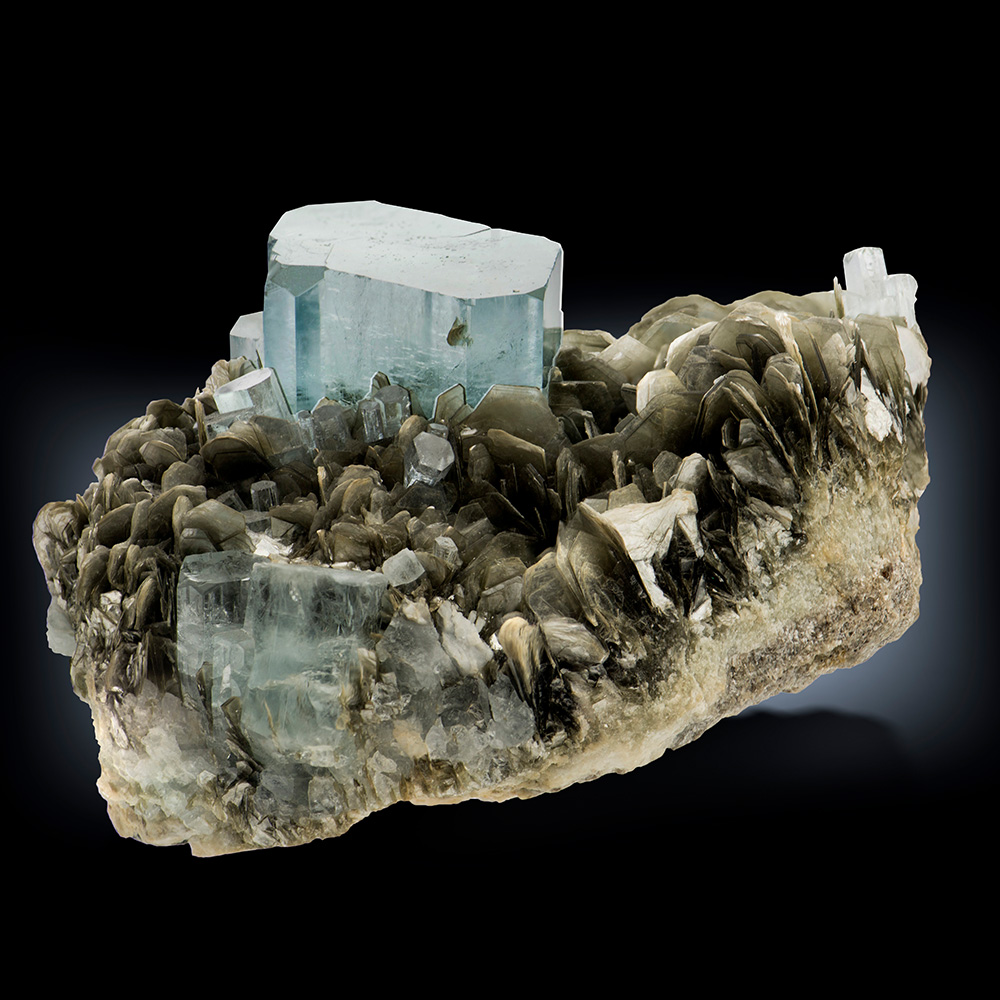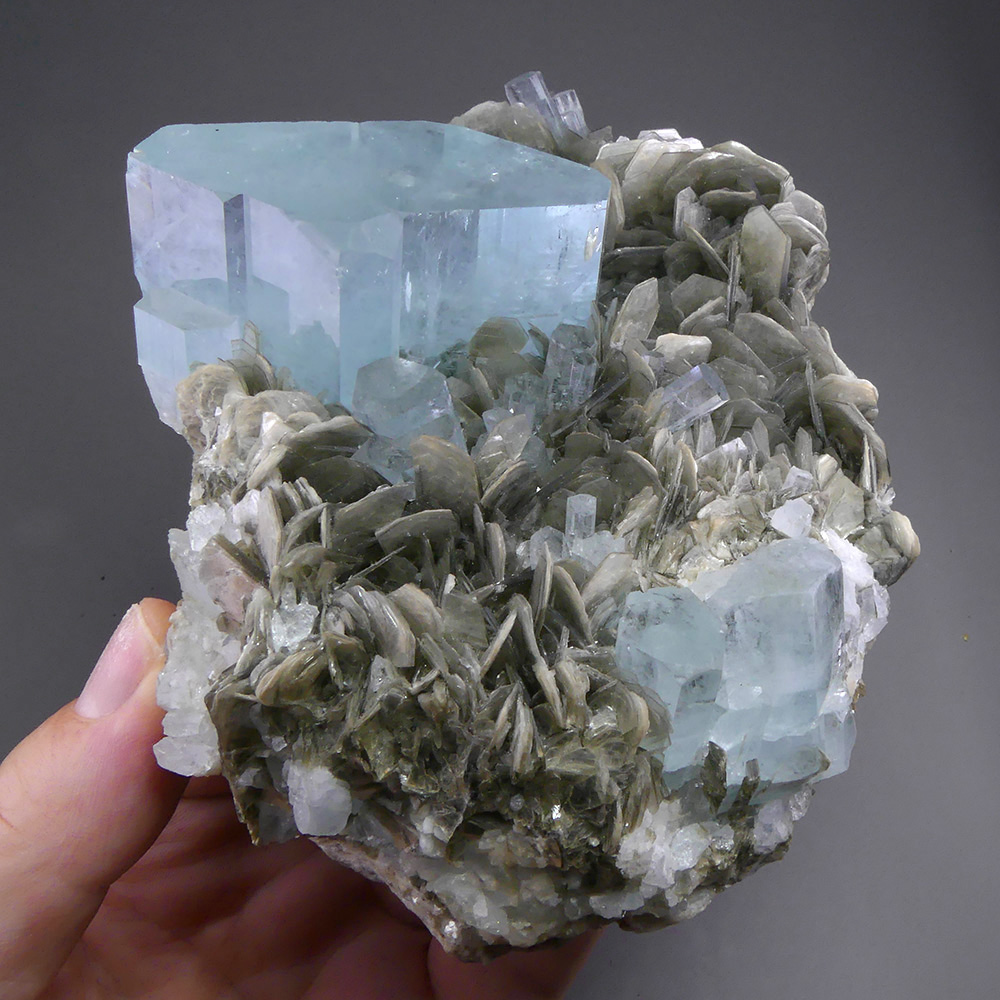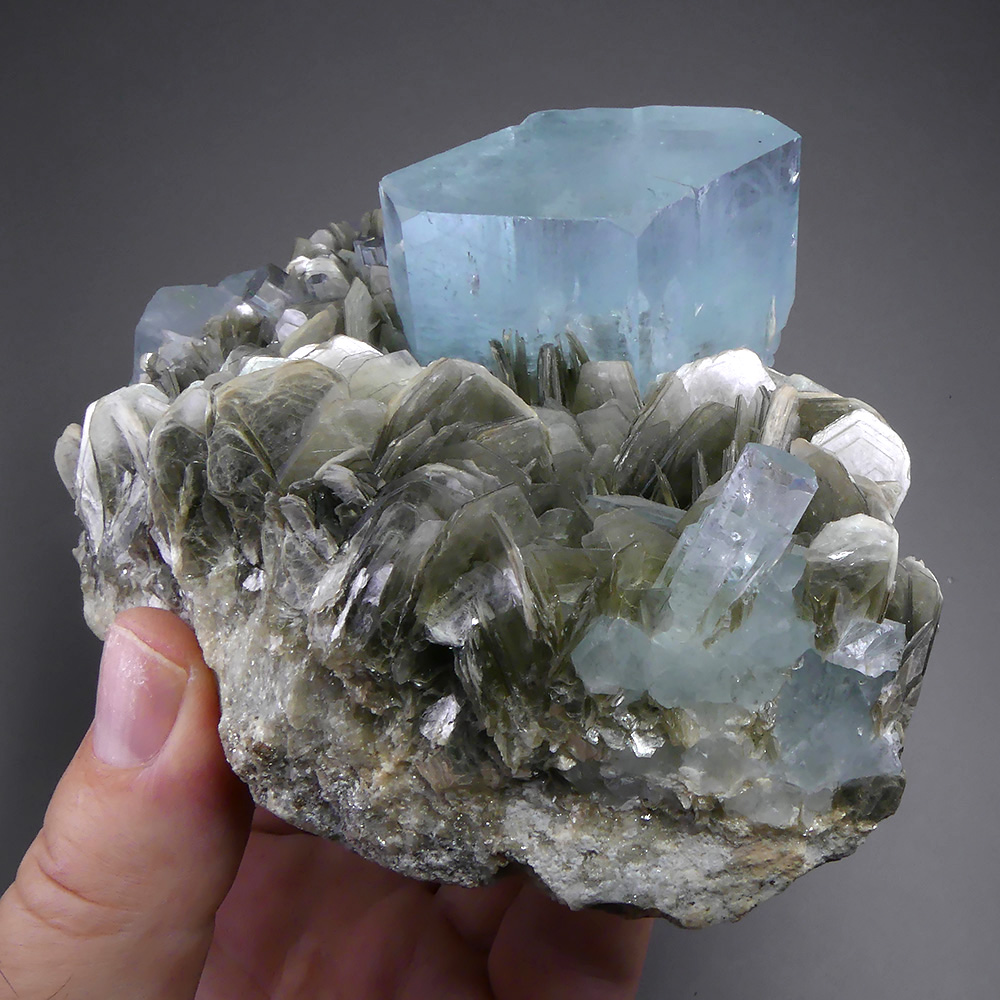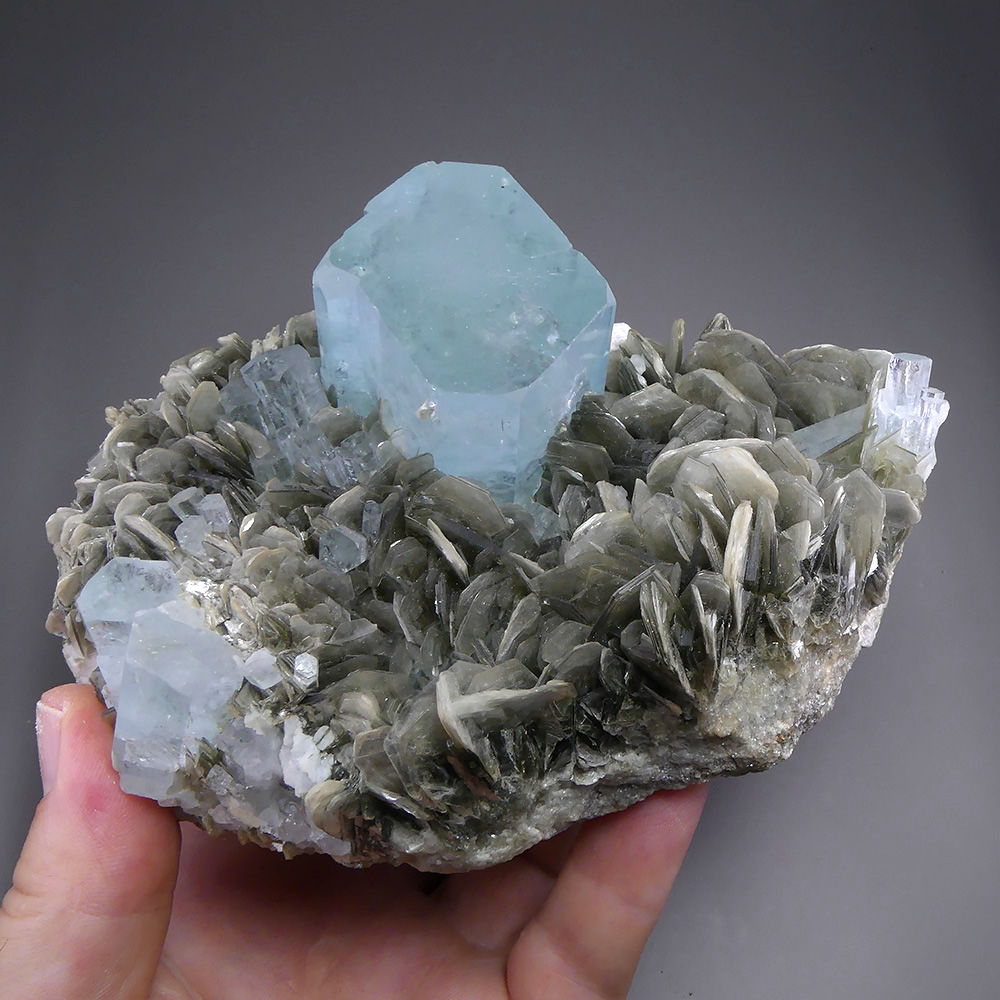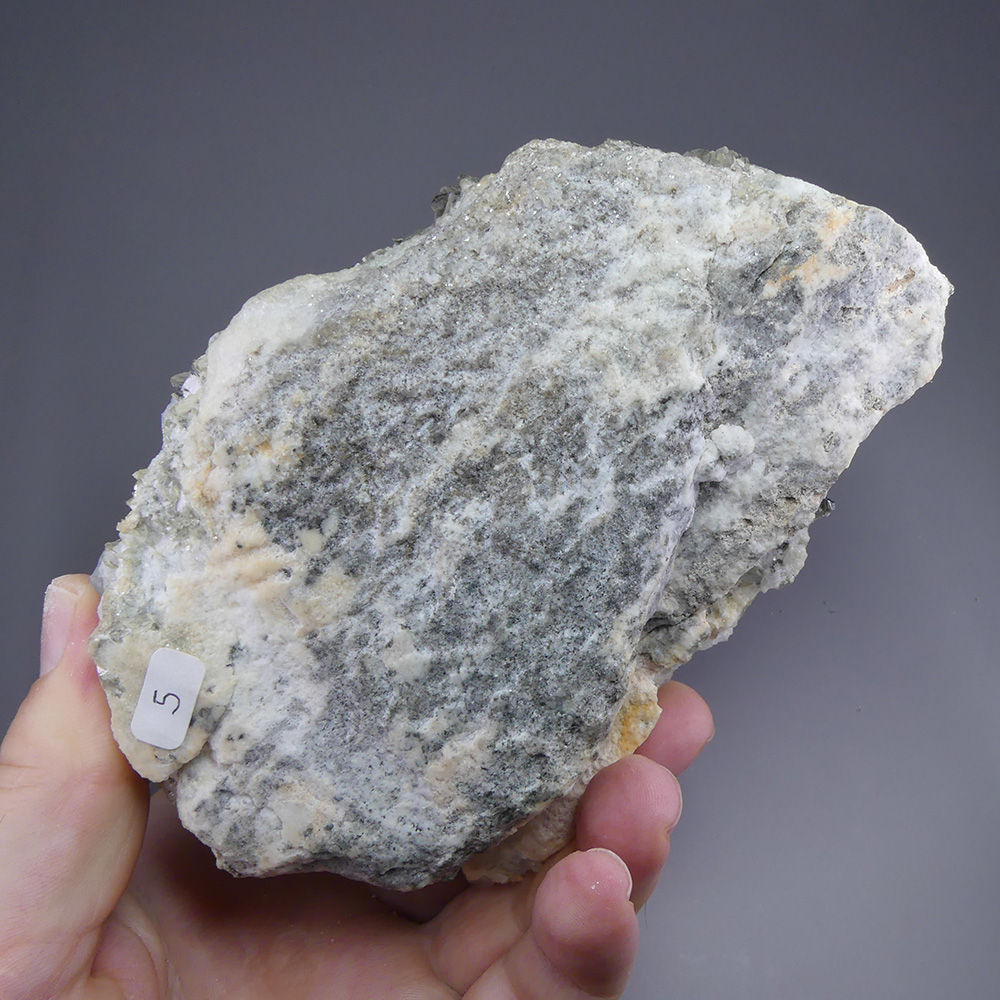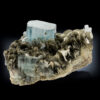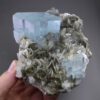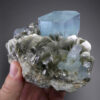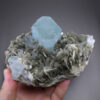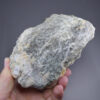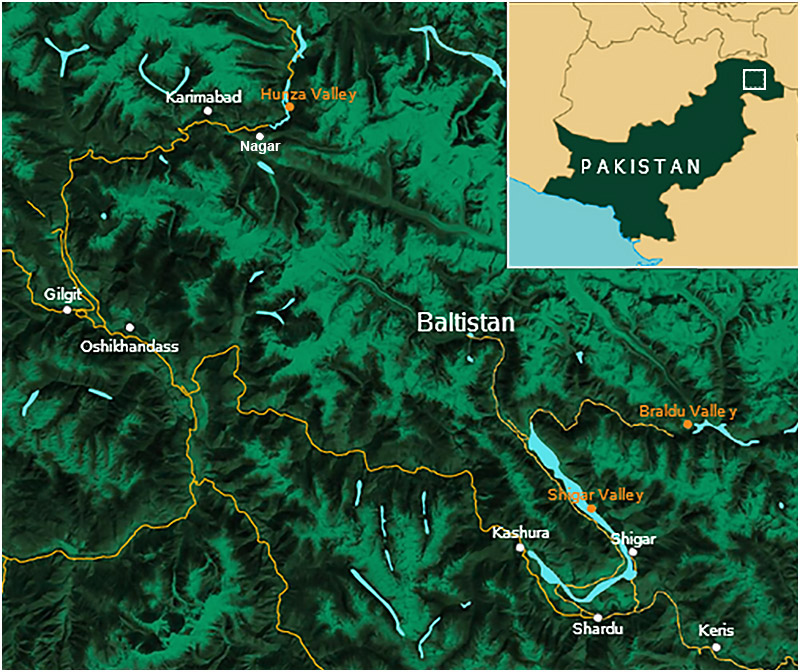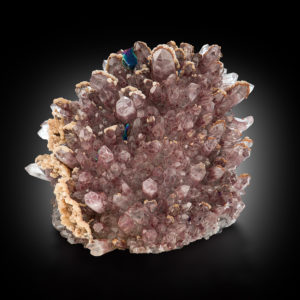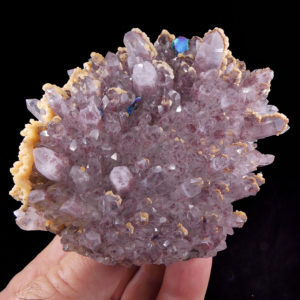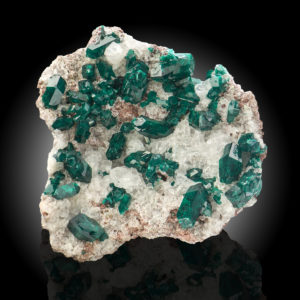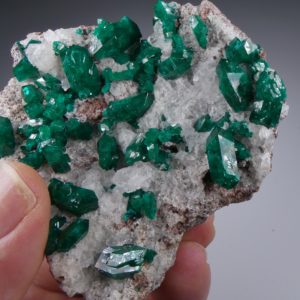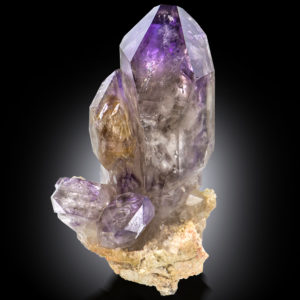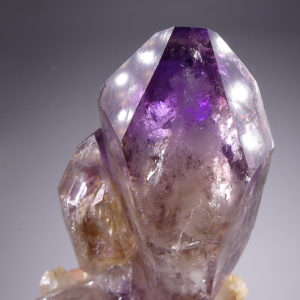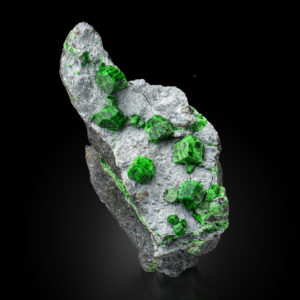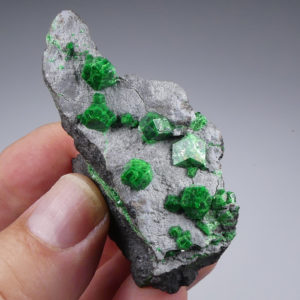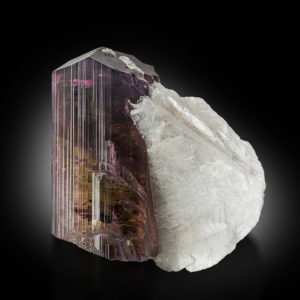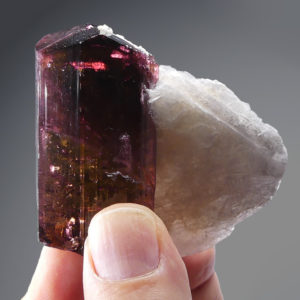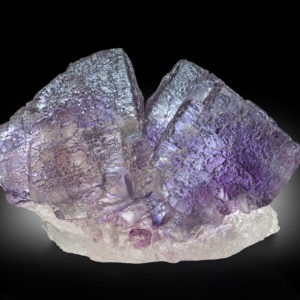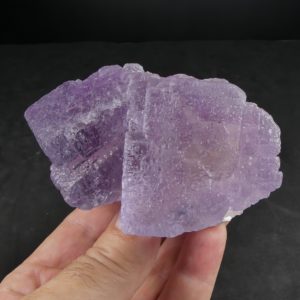AQUAMARINE – Pakistan – GFS0421
In stock
€ 1.500,00 +TAX
Aquamarine, Muscovite
Nagar, Nagar District, Gilgit-Baltistan, Pakistan
14x9x8,3 cm. (bigger Aq. crystal 5,6×4,5×3,5 cm.)
Aquamarine is one of the most beloved and sought-after minerals by collectors around the world. This is an aesthetic, well-balanced large combination specimen composed of a large single Aquamarine crystal aesthetically positioned on a bed of pearlescent Muscovite blades. The main crystal is surrounded by smaller Aquamarine crystals, all with a gem-like to translucent appearance and a fine icy blue to colorless hue highlighted by smooth and shiny surfaces. The main crystal, standing 3.5 cm tall, has the particularity of being a hexagon symmetrically flattened. Considering the large production of Aquamarines from Pakistan and the considerably high prices, we can confidently say that this piece offers an excellent quality-to-price ratio and good aesthetics.
Aquamarine is a blue to blue-green variety of the mineral beryl, found in various parts of the world, including Pakistan. Pakistan is a significant source of aquamarine, particularly from the Skardu District in the Gilgit-Baltistan region. The aquamarines from this area are often highly valued for their clarity, large crystal size, and vibrant color. These stones are mined from high-altitude pegmatites, making the extraction process challenging but rewarding. Aquamarine, like all beryl varieties, has the chemical composition Be₃Al₂(SiO₃)₆ and its color is primarily due to the presence of iron ions within its crystal structure :
Fe²⁺ ions contribute to a pale blue color.
Fe³⁺ ions can cause a yellowish color.
Fe²⁺ + Fe³⁺ when both are present, they combine to create the sea-green or blue-green hues typically seen in aquamarine.
The depth of color in Aquamarine can vary, with some stones being almost colorless, while others have intense blue hues. Warning ! Heat treatment is sometimes used to enhance the blue color by reducing the greenish tones.
Aquamarine forms in Pegmatites, which are coarse-grained igneous rocks formed during the final stages of magma crystallization. Pegmatites are rich in rare elements and can host large crystals of various minerals, including Aquamarine. The formation of Aquamarine occurs when beryllium-rich magma or hydrothermal fluids interact with surrounding rocks, often at high temperatures and pressures. It is typically found in granite pegmatites and sometimes in metamorphic rocks like Schists. These rocks provide the necessary environment for the crystallization of beryl minerals.
In northern Pakistan, Aquamarine is often found in the zoned-pegmatites of the Karakoram Range and the Shigar Valley in the Gilgit-Baltistan region, formed by magmatic hydrothermal fluids in the cavities and vugs at the core-margin zone, occasionally in the coarse-grained intermediate zone within the host pegmatites. Aquamarine crystals, commonly associated with Albite, Muscovite, and Tourmaline, grow over long periods that can take millions of years, which enables them to take on their distinctive hexagonal prismatic shape. This region is renowned for producing not only world’s class Aquamarine crystals but also a variety of other semiprecious minerals such as Tourmaline (Schorl), Garnet (Almandine–Spessartine), Apatite, Topaz, Fluorite, Zoisite, Clinozoisite, and Axinite highly appreciated by collectors all over the world. For more info ![]() and
and ![]()
In stock
Additional information
| Weight | 1.141 kg |
|---|---|
| Dimensions | 14 × 9 × 8.3 cm |
| Country | |
| Location | |
| Species |

